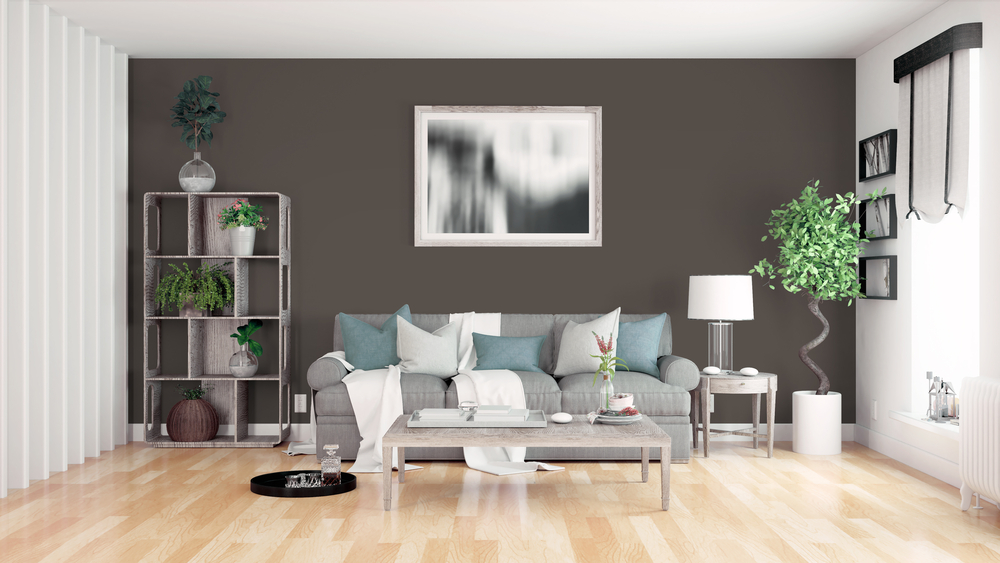If your décor tastes run somewhere in between a sleek ultramodern look and the classical lines of traditional décor, then maybe what you are looking for is a transitional style. This décor theme ‘transitions’ between the old and the new, blending together the best of both worlds to create your own style that speaks to your unique personality. Sounds right up your alley? Here’s how you can pull it off!
Pick a Neutral Palette
Transitional style tends to follow a neutral, muted colour palette. You can’t go wrong if you choose shades of grey, white, cream, sand or beige. A pared-down, quiet background also sets the stage for incorporating simple elements of classical décor. Artwork and classical furniture can get the attention they deserve against a neutral backdrop.
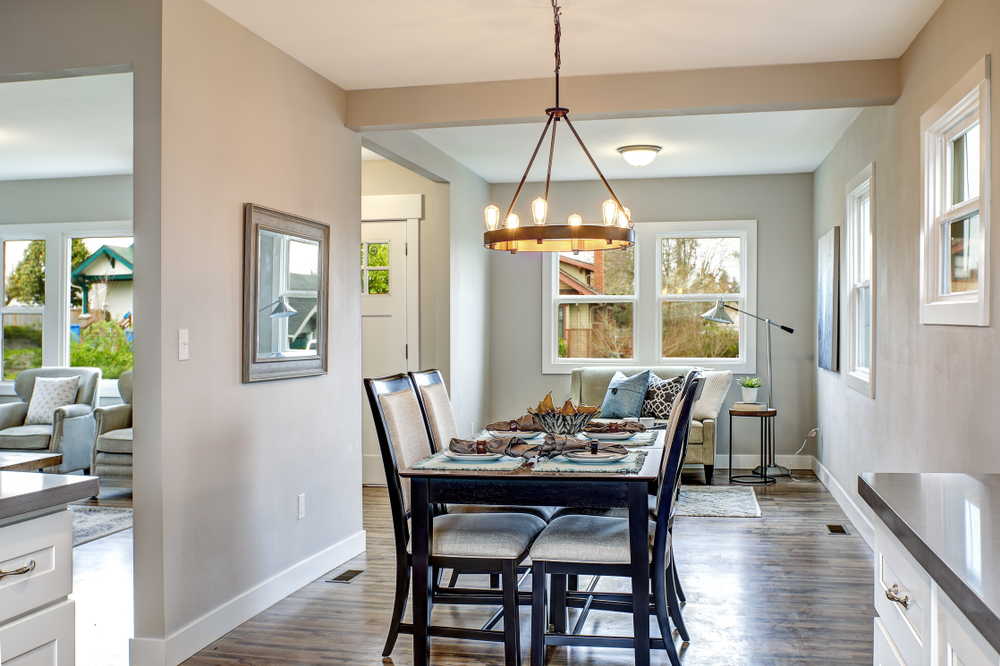
Transitional Furniture
Traditional furniture in teak, mahogany or oak would fit right into this décor style. Choose fine furniture, with patterns and lines that will never go out of style, and will not look out of place in a modern context. With the right mix of materials and textures, classic can meet contemporary, toning down the heaviness of traditional décor with the light airiness of new-age styling.
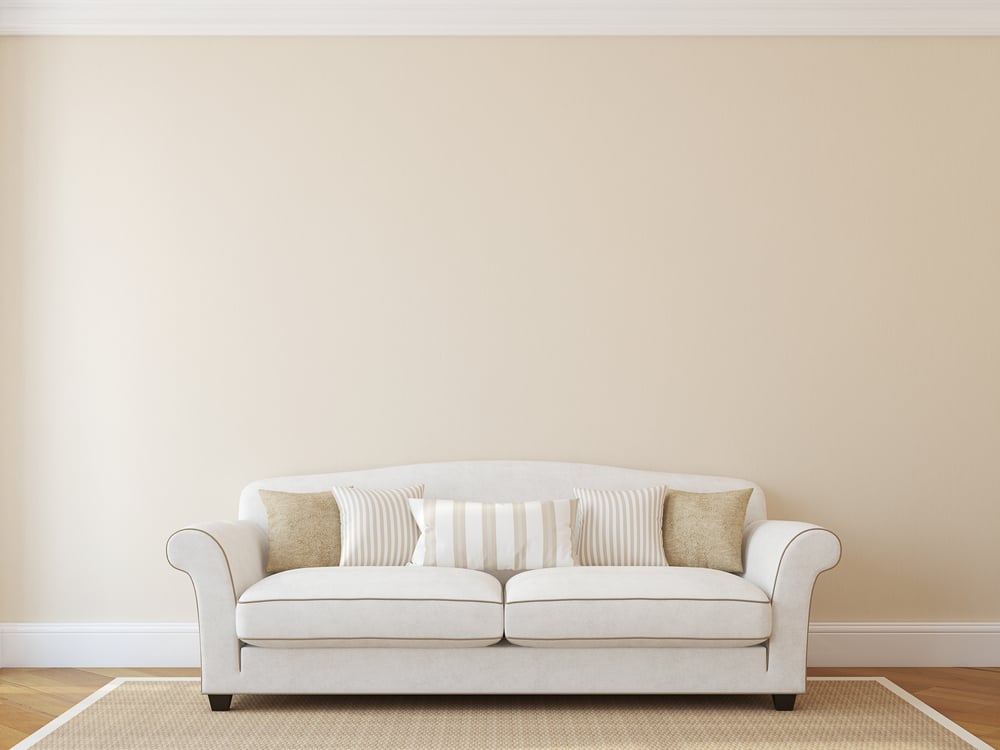
Choose Colourful Accents
Bold colours definitely have their place in the transitional style, but be careful to ensure that they do not overwhelm the neutral backdrop. Add colourful accessories, drapes, rugs and cushions for an element of fun. Raw silk drapes in deep aqua, paired with pale pink velvet sofas and rugs would be a great value addition to a transitional living room.
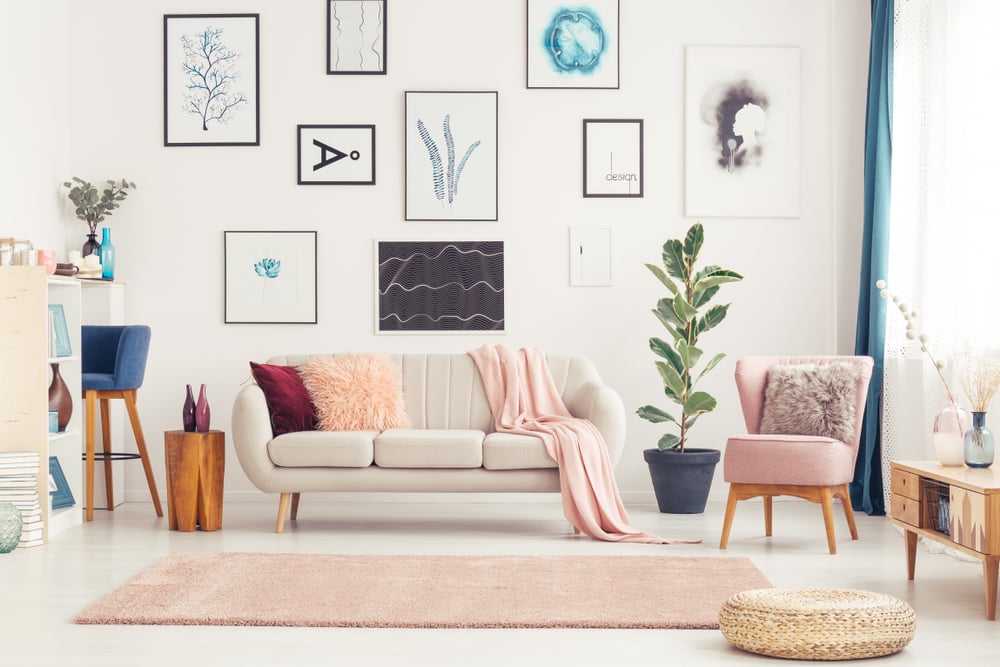
Blend Décor Elements
The transitional style gives you the freedom to mix and match décor elements across different eras or themes. In this charming kitchen, country-style cabinets effortlessly blend in with the ultra-modern Scandinavian-style dining table. Try to create a cohesive look using the same design vocabulary in this space, the pale green elements across the room make it all work well together.
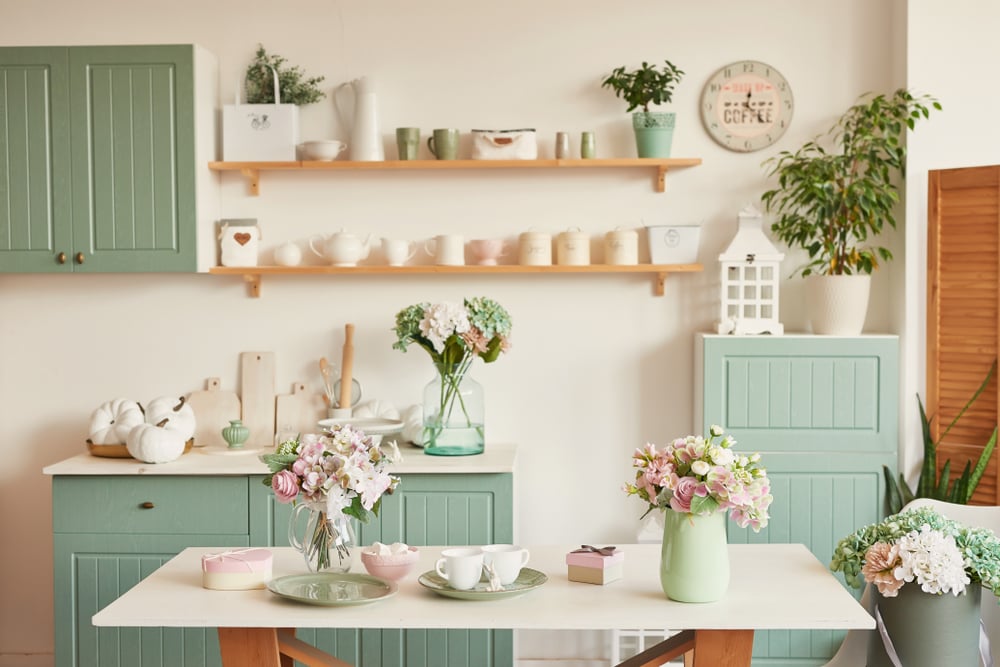
Create Brilliant Combinations
You are just not restricted to a time and place, so feel free to go with what your heart loves and create winning combinations! The industrial style pendant lamp above this minimalistic modern table seems to go perfectly well with the retro cabinet against the wall, the classical wall panelling and the sleek wireframe storage unit.
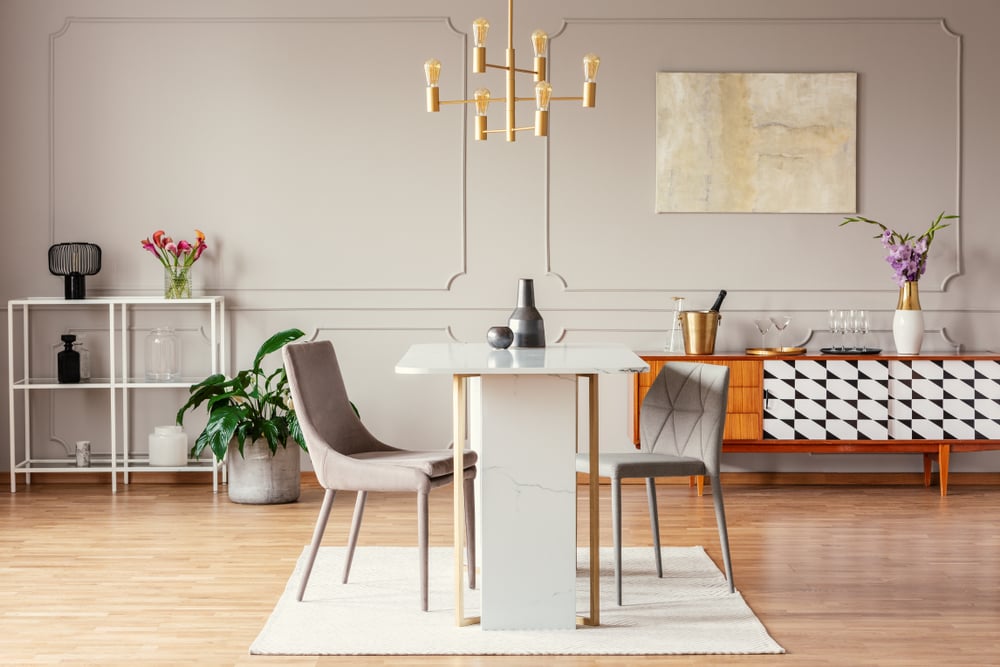
Experiment with Texture
Try to use textured elements to add focal interest. Rattan or wickerwork, wood, glass, metal or stone finishes will all have their place in this décor style. Mix and match and move things around till they look like they fit. However, take care to keep things as minimal as you can. Do not use too many opposing textures in the same space, as you don’t want to confuse your visitors. 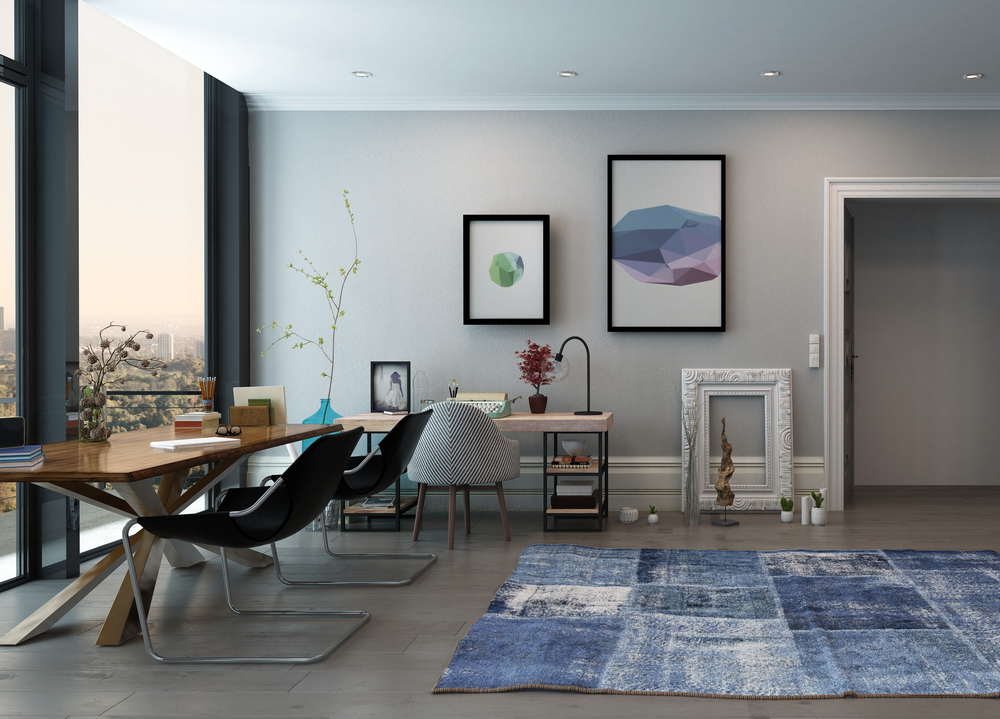
Pile on the Cushions
This style is a happy meeting of the old and the new. Soft furnishings can help to marry both styles, so do pile on the cushions! Feel free to incorporate textural elements in the fabrics, and mix patterns and colours that blend well together. Area rugs, throws and potted plants are other accessories that you can never have enough of!
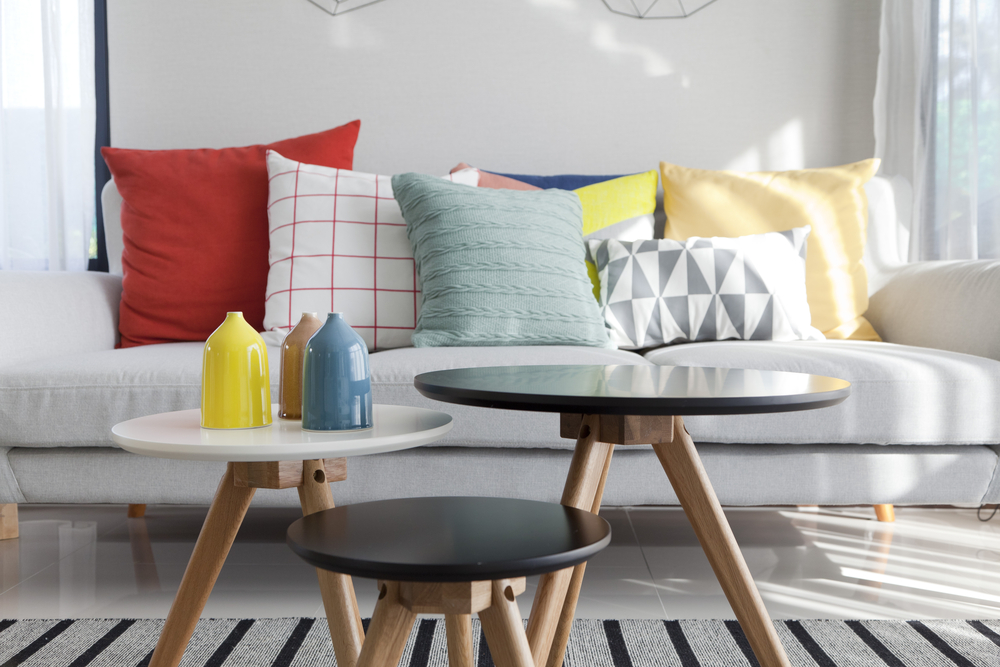
Transitional Décor Tips You Can Incorporate in Your Home:
- Look for traditional furniture with sleek lines; anything that is overly dramatic or pure vintage can look out of place here.
- Wooden furniture that is simple, but beautifully crafted can take pride of place in a transitional home. Again, do not have too many focal pieces in a room. Each piece of furniture should stand along and garner enough attention.
- Choose dark and bold colours only to add depth and create focus, but keep the overall aesthetic pared down and neutral.
- Prioritise furniture that adds comfort as well as utility.
- Mix straight and rounded silhouettes to strike a balance between masculine and feminine aspects of the design.
- Natural materials go wonderfully well with this décor style.
- Look for common factors that will tie your look together seamlessly. Colours or textures can be a unifying denominator.
- Take a minimalistic approach. Since you are mixing styles, too much of anything in the room can quickly get out of hand.
The transitional style interior is not easy to pin down, especially because there really are no rules. When done right, you will find that your home is totally unique and represents everything you love in home décor. If you’d like a designer’s special touch in your home interiors, it’s time you connect with the HomeLane team!

